
It can be easy to put off cleaning gutters, but it’s a necessary job that isn’t difficult and will keep them working properly. Rain gutters get clogged with leaves and other debris over time, so cleaning them regularly is best to avoid more difficult work later. The good news is, that it’s not hard to clean gutters. Use this guide to learn the basics of how to clean gutters and downspouts.
Why Is It Important To Clean Your Gutters?
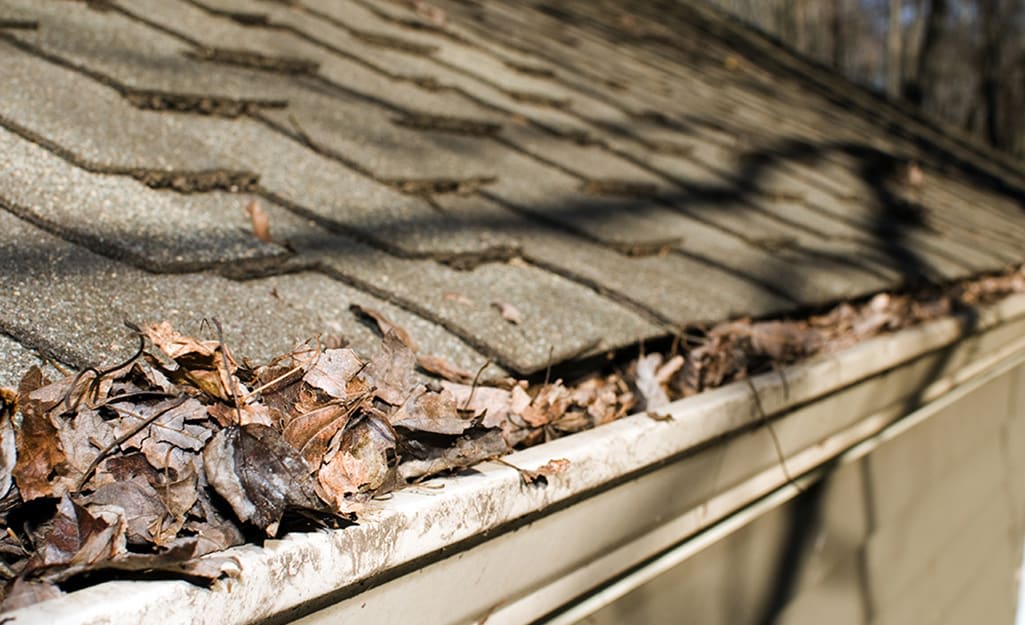
A home’s gutter system controls the flow of rainwater from the rooflines. This protects your home’s roof, walls, foundation, and landscape. If debris builds up in them, it could lead to sagging gutters, mold growth, wet basements, a leaky roof, or water damage to the interior or exterior of your home. Gutters filled with debris can also make homes for rodents and other pests. Neglecting gutter maintenance can lead to costly repairs down the line.
Gutters need to be cleaned at least twice a year – in the spring and in the fall. If you have pine trees near your home, needles will need to be removed every three months to reduce the potential for clogging the gutters and downspouts.
Hiring someone to clean your gutters is an option if you aren’t comfortable on a ladder. Fees vary depending on your location. Prices are based on how many linear feet of gutters you have. It typically costs more if you have a two- or three-story home.
Determine If Gutters Should Be Replaced, Repaired, Or Cleaned
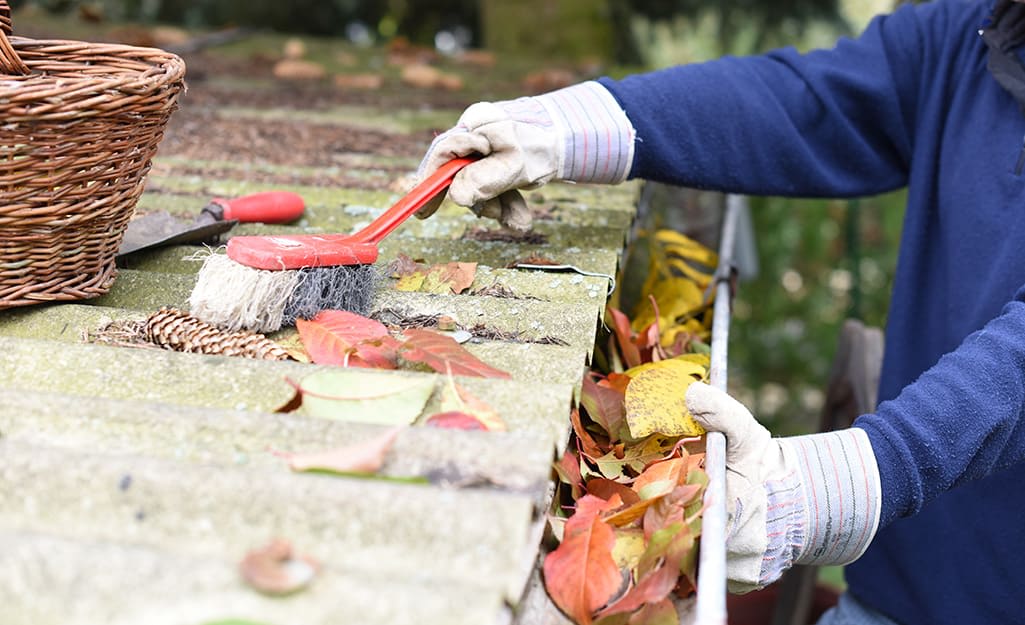
Regular maintenance will make your gutters last longer. At some point, they will need to be repaired or replaced to help protect your home from water damage. Here are a few signs that will help you determine if your gutters need to be repaired or replaced.
Cracks or Splits
Even small cracks will grow, allowing water to seep into the fascia boards behind the gutters, the shingles above the gutter, and the foundation below. Replace any split or cracked sections of the gutter.
Paint Damage and Rust
The paint on your gutters is weather-resistant. Peeling paint or rust indicates that water is present on the surface continuously. Look for clogs and remove debris to get the water flowing. Replace or touch up the paint on the damaged section of the gutter.
Pools of Water and Mold
If you see standing water or mildew near the foundation, it can indicate that the gutters are clogged or there could be a defect in the gutter system. Remove the clog. If the problem persists, replace that section of the gutter and downspout.
Water Damage or Watermarks
Inspect directly beneath the gutters on a dry, sunny day for any evidence of water damage. Water damage underneath gutters can indicate that they are leaking or overflowing with water. Look for possible blockages in the area. If there are none, this indicates that the section has a crack or a leak that will need to be repaired or replaced.
Sagging Gutters
Gutter sag is a definite sign that it’s time to replace gutters. Gutters should never sag or pull away from the house. Sagging gutters means that it is no longer draining properly and need to be replaced. This may be a good time to look into upgrading your old ones with gutter guards or screens or with seamless gutters.
Guidelines for How to Clean Your Gutters and Downspouts
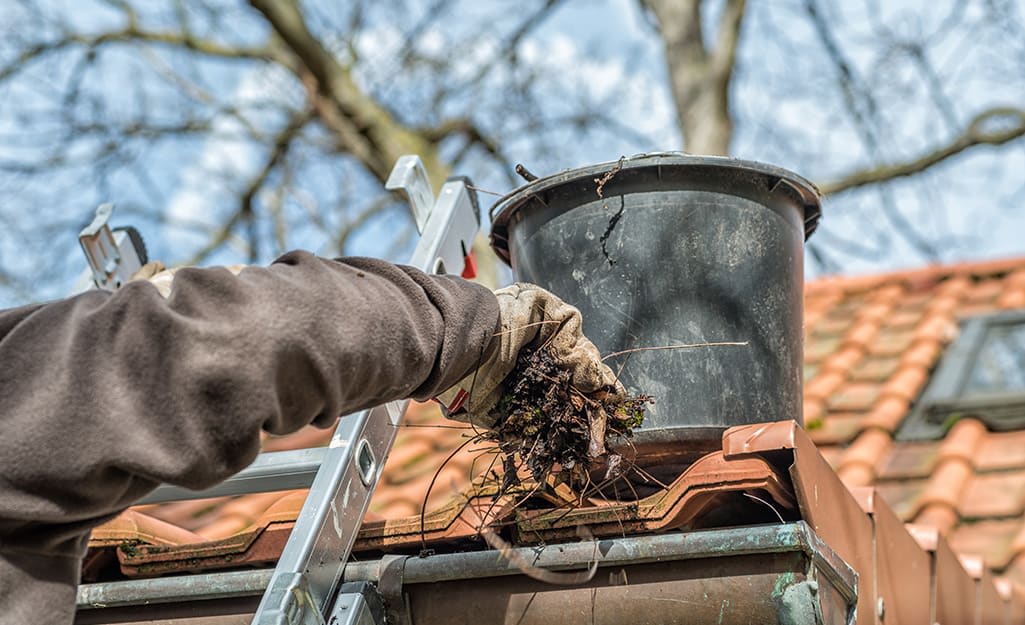
A regular and thorough cleaning helps keep gutters in tip-top shape. It requires only a few tools and an afternoon to get water flowing from your roof and away from your home.
Cleaning gutters in early spring will prepare them for the heavy spring and summer rains. In the early fall, clear out leaves and other debris that accumulated during the warmer months.
When possible, avoid cleaning gutters after rain. Allowing a few dry days before cleaning your gutters will allow the debris to dry out, making the chore much easier.
Start your gutter cleaning task near the downspout and work toward the closed end.
Practice Ladder Safety
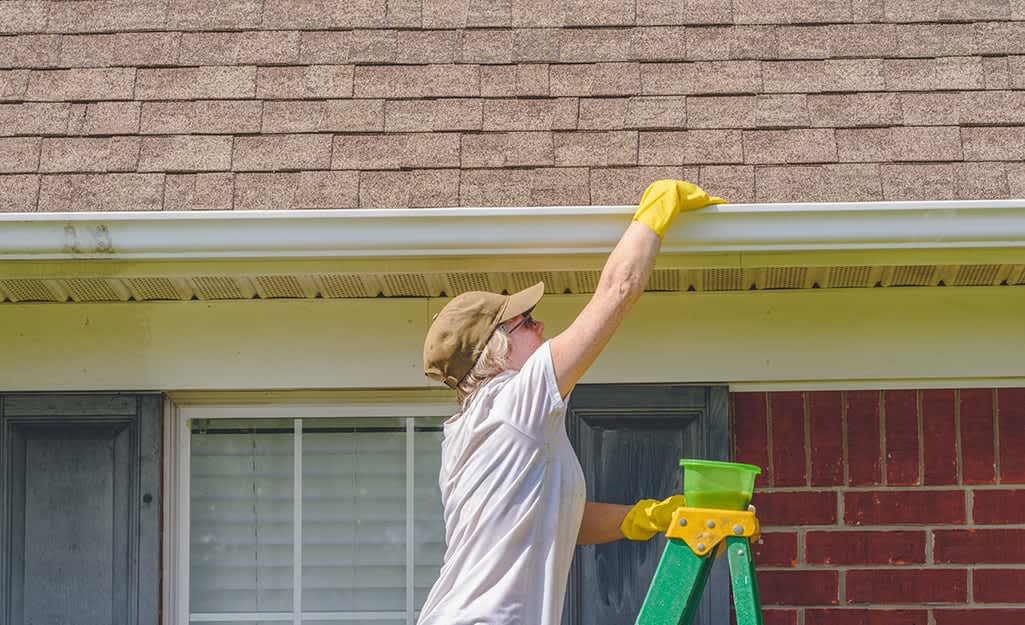
Cleaning gutters requires working from a ladder. Work safely.
- Never climb above the second to last step/rung.
- Do not extend your reach.
- Use a step ladder on solid level ground whenever possible.
- For two-story homes, use an extension ladder.
- Use a ladder stabilizer to help keep your ladder in place, if using an extension ladder.
- If you are not comfortable on ladders, consider hiring a professional.
Clear Debris From the Gutters
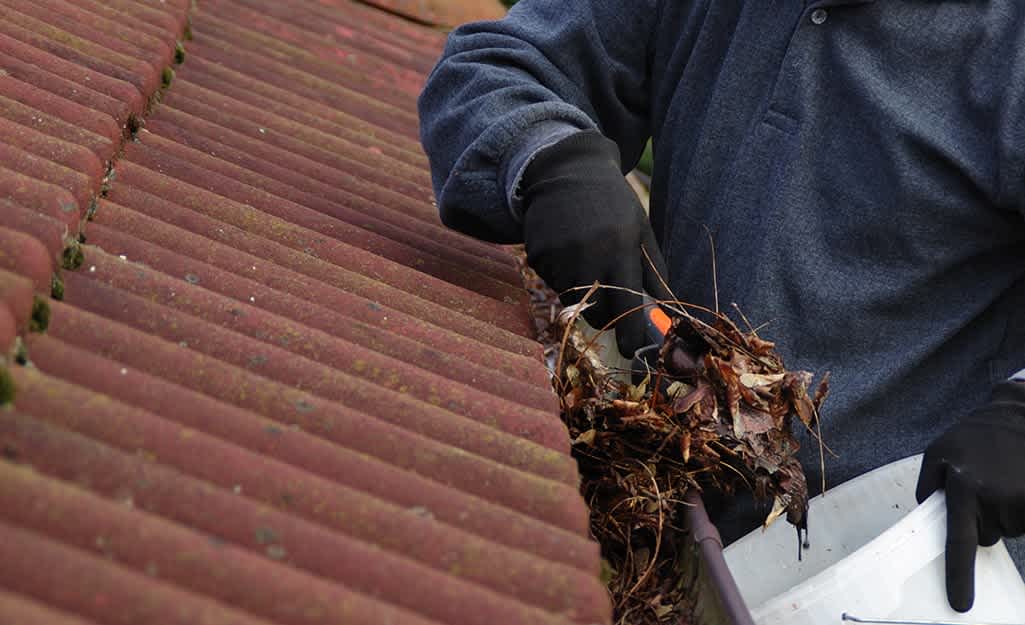
Have two buckets available to make your job easier. Use one bucket for the debris you remove. The second bucket can hold your tools. Hook the buckets to your ladder for easy access.
- Wear safety glasses to keep bits of dried leaves and other debris out of your eyes.
- Put on the rubber gloves under your work gloves if the debris is damp. This will help keep your hands dry while protecting them.
- Begin cleaning near a downspout. Place your ladder squarely on level ground before you climb it.
- Remove and clean the downspout strainer.
- Clear large debris such as leaves and twigs by hand.
- Use a trowel or gutter scoop for compacted debris.
Flush the Gutters
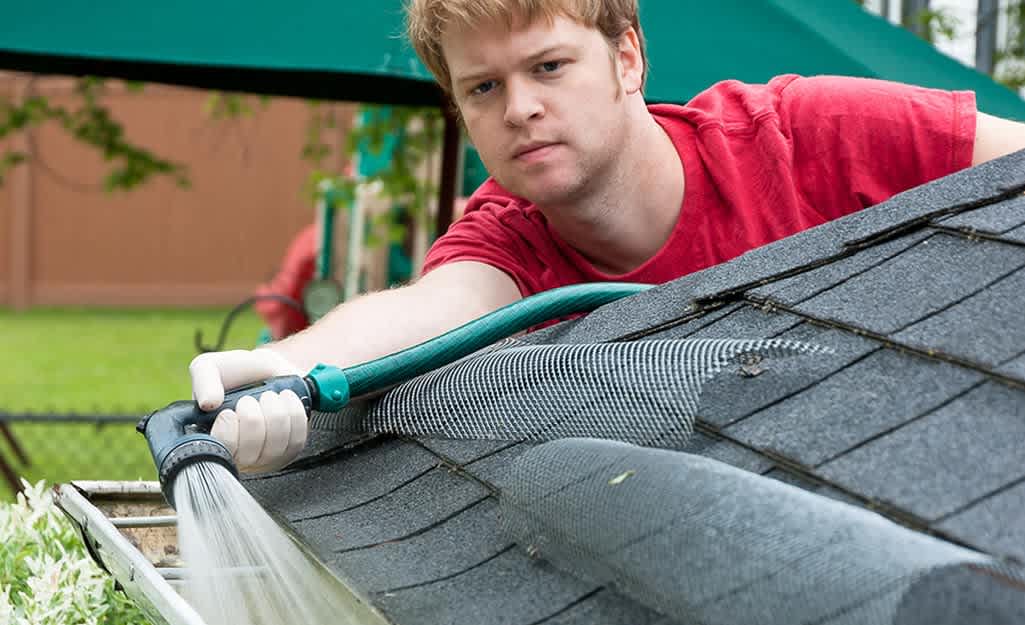
After most of the debris is removed, flush the remaining bits and dirt from the gutter with a garden hose.
- Fit your garden house with a spray nozzle.
- Flush out the gutter with water, starting at the far end and moving toward the downspout.
- Use a strong stream of water and avoid spraying underneath the roof shingles.
Specialty gutter cleaning attachments for your garden hose can make the job easier. For maximum power when spraying gutters and downspouts, use a pressure washer.
Check the Downspouts

After the gutters are clean and the water used for flushing isn’t draining quickly, check the downspout for clogs and any lodged debris. Turn the hose on and spray down the spout. If the amount of water coming out is less than what is going in, there is a blockage.
- Feed the hose up the downspout from the ground.
- Turn the hose on at full pressure to try to dislodge the clog.
- If this does not dislodge the clog, use a plumber’s snake to break up the blockage.
- If you have a downspout that flows into an underground tiling system, you will need to remove the bottom end to access the longer length of the downspout.
Check for Gutter Drainage and Slope
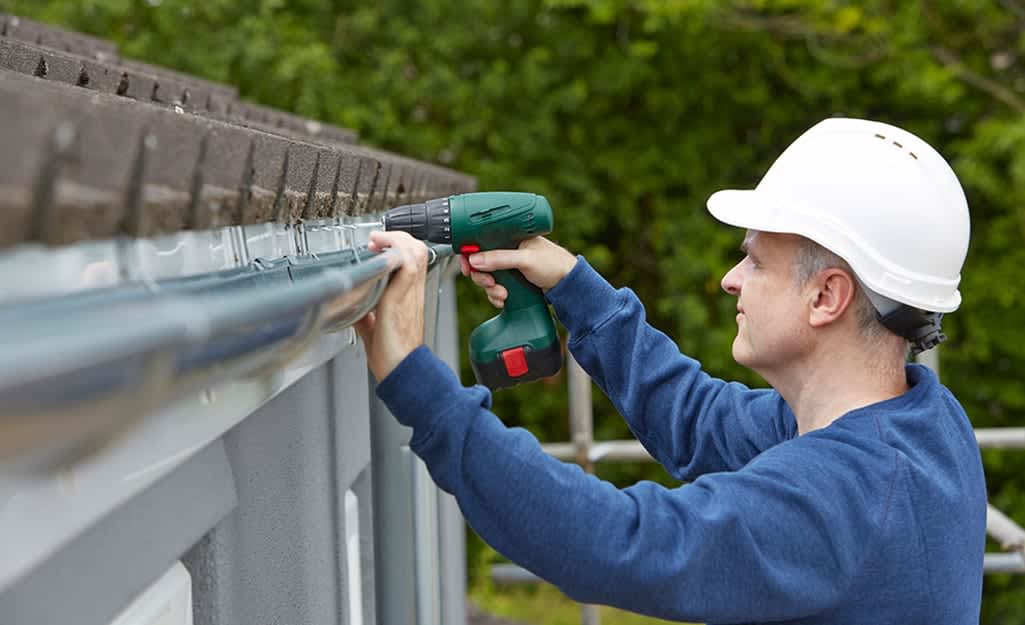
When the downspout is clog-free, flush the gutters once again. Check for proper water flow and drainage. Also, look for any leaks at the seams.
- If there is any standing water in the gutter, the gutter is not properly sloped. Gutters should slope 1/4 inch for every 10 feet toward the downspout. If your gutters do not slope properly, detach the hangers to adjust the gutters to the proper slope.
- Make sure all the gutters are secure and firmly attached to the house.
- Inspect each gutter section and the downspout for damage.
- Add support hangers or reattach gutters to the fascia if needed.
Complete the Gutter Cleaning
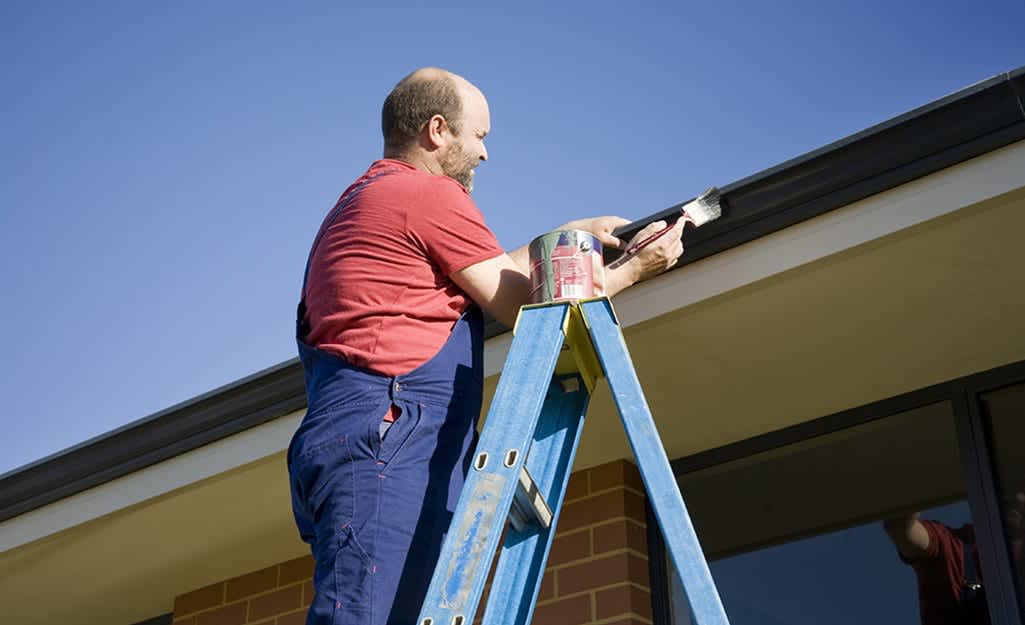
Seal any leaking seams and joints with gutter sealant, following the product’s instructions. To spruce up the outside of the gutters, use a pressure washer to remove any mildew and dirt. Touch up with paint, if needed.
Now that your gutters are free of debris and draining effectively, consider adding gutter screens to reduce the amount of work needed for future gutter cleaning.
Cleaning your gutters is a necessary home maintenance task. With the right tools and this guide on how to clean gutters, you can complete the work and repairs on your own. If you need a ladder to reach your gutters, rent one from your local Home Depot. The Home Depot Rental.




